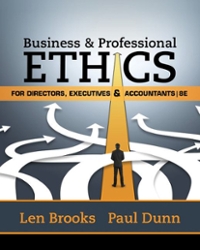On January 6, 1992, the growing controversy over the safety factor led the U.S. Food and Drug
Question:
On January 6, 1992, the “growing controversy over the safety factor led the U.S.
Food and Drug Administration to call for a moratorium on breast implants.”1 As January wore on, the crisis deepened until, on January 30, the Toronto Globe and Mail carried a New York Times Service report titled “Dow Corning Fumbles in Damage Control.”
Among other critical points, the article stated, Regardless of whether Dow Corning Inc. ever convinces regulators its silicone-gel breast implants are safe, the company seems likely to be branded as bungling in its handling of the problem, say public relations and crisis management experts.
“It’s a textbook case of crisis management,”…“it looks like the lawyers are in charge, trying to limit their liability.” “But the damage is much worse to the corporation if they lose in the court of public opinion than if they lose in the court of law.”
Consultants concede that, because Dow Corning argues there is little evidence supporting many of the injury claims, it is difficult for the company to act sympathetically without appearing to undermine its legal strategy. (p. B1)
The controversy escalated until, on March 20, one month after the U.S. authorities called for sharply restricted use and their Canadian counterparts opted for a moratorium, Dow Corning canceled its breast implant line. The company also offered up to \($1,200\) each to women in the United States not covered by private insurance who needed to have their implants removed. In addition, \($10\) million was to be spent by the company on research into breast implants.2 Among the issues raised by this unfortunate controversy is how faulty breast implants could come to be sold by Dow Corning, a company that had been lionized for almost a decade in three Harvard cases for its outstanding ethics program.
The basic details of this program3 are as follows:
Six managers serve three-year stints on a Business Conduct Committee;
each member devotes up to six weeks a year on committee work.
Two members audit every business operation every three years; the panel reviews up to thirty-five locations annually:
Three-hour reviews are held with up to 35 employees. Committee members use a code of ethics as a framework and encourage employees to raise ethical issues.
Results of audits are reported to a three-member Audit and Social Responsibility Committee of the Board of Directors:
Interestingly, although the silicone breast implant operation had been audited four times since 1983, and the ethics audit approach had failed to uncover any signs of problems, Jere Marciniak, an area vice president who is chairman of the Conduct Committee, has stated that “he has no plans to touch … the ethics program.… ‘It will still aid and guide us through this difficult time.’”
Questions:-
1. Why did the Dow Corning ethics audit program not reveal any concerns about the silicone-gel breast implant line?
2. What are the critical factors necessary to make such an ethics audit program work effectively?
3. Was the announcement on March 20 well advised and ethical?
4. Are there any other ethical dilemmas raised by the case?
Step by Step Answer:

Business And Professional Ethics
ISBN: 9781337514460
8th Edition
Authors: Leonard J Brooks, Paul Dunn





